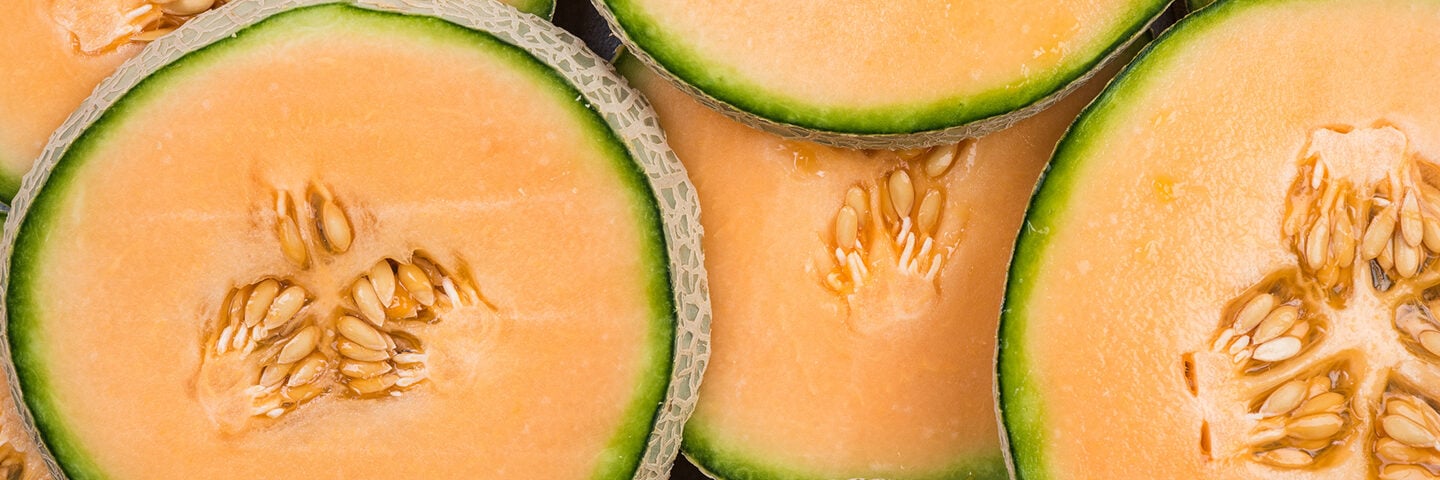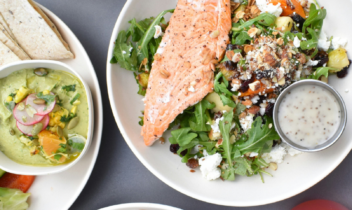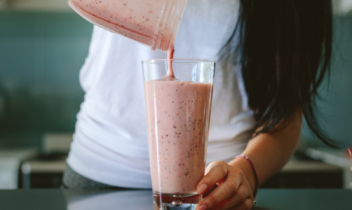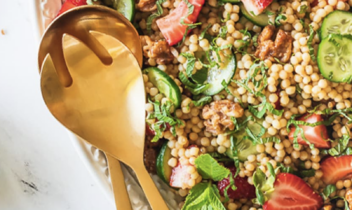
How do I pick the perfect cantaloupe?
Answer
A lot has changed in the cantaloupe world! Plant breeders are constantly working to improve cantaloupe varieties to give you the best eating experience possible. For the past few years, the cantaloupe industry has been working to develop new varieties that have longer shelf life, which helps reduce food waste, while also preserving that same great cantaloupe flavor we all know and love!
These new varieties mean new rules when it comes to picking out the perfect melon!
Here’s what you need to know about selecting cantaloupe:
- A Little Green is OK
While a cream color is always a good indicator of a mature melon, new varieties may often have a somewhat green hue. Don’t be deterred by a slightly green cast on new variety of cantaloupes.
- Cracking Isn’t Always a Bad Thing
If the ‘blossom end’ (the end opposite the stem) is beginning to show a bit of cracking, this is a very good indicator of ripeness. Another sign of ripeness, this blossom end will be somewhat soft to the touch, meaning it gives slightly when pressed gently with the fingers.
- Stem or No Stem – Either is Fine
The stem end of newer cantaloupe varieties may be smooth, but it’s just as likely to have a bit of stem left on the melon. A good sign of a mature melon is that some netting is growing up the stem. Netting is the raised net-like texture on the shell of the cantaloupe.
- The Nose Doesn’t Always Know
Newer varieties don’t ripen much differently from the older varieties, other than the fact that they don’t emit ethylene, which gives them a longer shelf life. This also means that they don’t give off the same traditional, sweet melon smell, even though they typically have higher sugar content than the old varieties.
Why the Change?
The main type of cantaloupes once grown in California were known by cantaloupe farmers as ‘Western Shippers.’ Western Shipper cantaloupes have a very sweet fragrant smell and they produce ethylene. Ethylene is a gas some fruits release that causes them to ripen faster, and therefore spoil faster. In an effort to reduce food waste, fewer Western Shippers are being planted every year.
For most of the California cantaloupe season between May and October, consumers can expect to see ‘newer’ cantaloupe varieties. Importers are also planting these new cantaloupe varieties. You won’t see them labeled as such in stores, but cantaloupe farmers refer to these new varieties as LSL (Long Shelf Life) and ESL (Extended Shelf Life). While ESL and LSL cantaloupes have really great flavor, you may notice their flesh is firm and their exterior shell is harder. But don’t worry, this is exactly how these cantaloupes are bred (using cross-pollination, NOT GMO). Firm flesh and hard shells are part of the reason these new varieties last so much longer!
Does This Mean New Benefits?
Reduce Food Waste
As the name indicates, new Long Shelf Life and Extended Shelf Life cantaloupes help reduce the amount of food that gets thrown away in grocery stores because of their extended shelf. It also means you’ll have more time to eat them at home. You can expect these new cantaloupe varieties to last up to three weeks in the refrigerator or up to one week on the counter! Just remember to always refrigerate cantaloupe after cutting it.
Constant Improvement
The cantaloupe world is in transition. Plant breeders are constantly working to not only breed new varieties that last longer, but that also taste better. That means that consumers can expect cantaloupes to get even better with time! Please note that today’s new cantaloupe varieties are NOT produced using genetically modified breeding techniques but are the result of traditional cross pollination methods for varietal development.
You can read more on the California cantaloupe varieties here.


